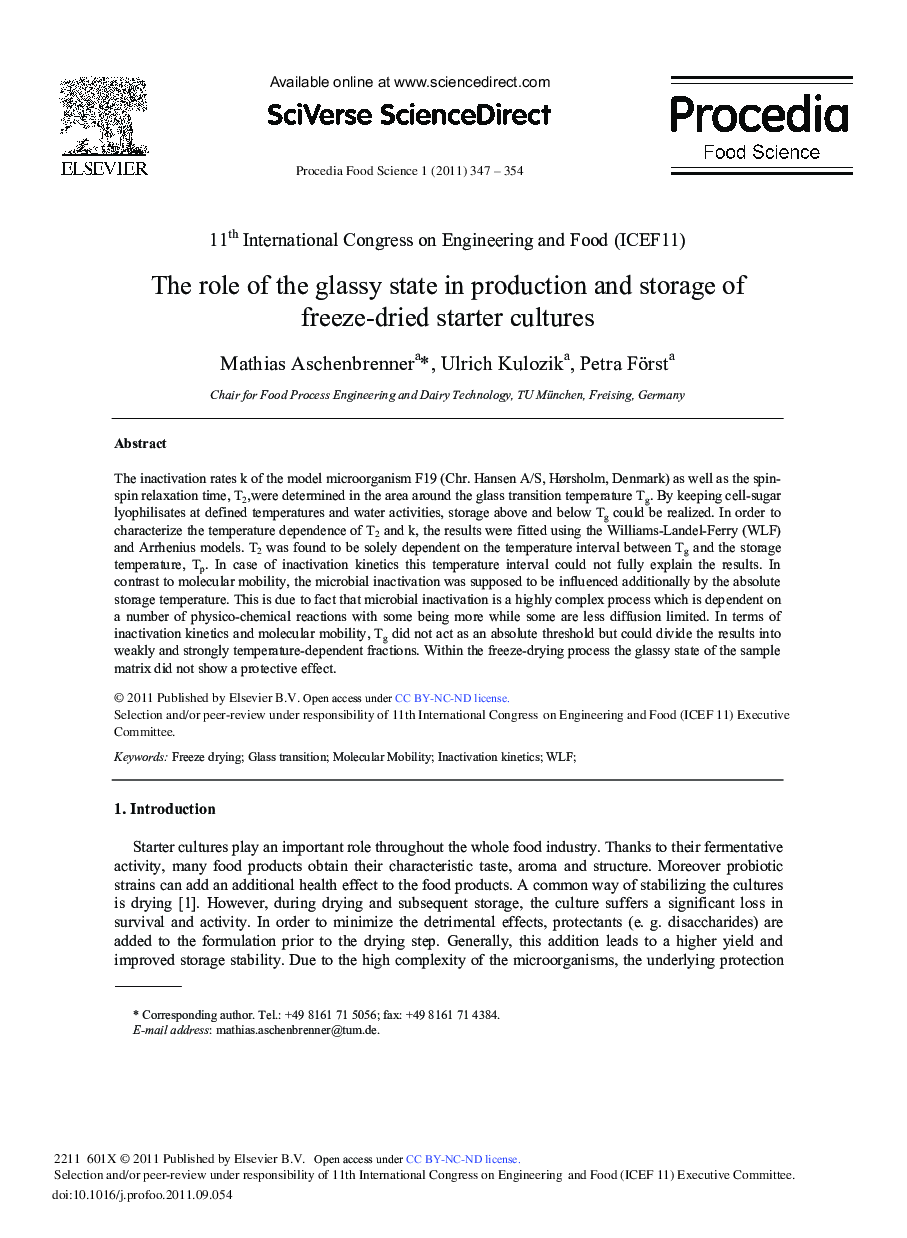| Article ID | Journal | Published Year | Pages | File Type |
|---|---|---|---|---|
| 1264962 | Procedia Food Science | 2011 | 8 Pages |
The inactivation rates k of the model microorganism F19 (Chr. Hansen A/S, Hørsholm, Denmark) as well as the spin- spin relaxation time, T2,were determined in the area around the glass transition temperature Tg. By keeping cell-sugar lyophilisates at defined temperatures and water activities, storage above and below Tg could be realized. In order to characterize the temperature dependence of T2 and k, the results were fitted using the Williams-Landel-Ferry (WLF) and Arrhenius models. T2 was found to be solely dependent on the temperature interval between Tg and the storage temperature, Tp. In case of inactivation kinetics this temperature interval could not fully explain the results. In contrast to molecular mobility, the microbial inactivation was supposed to be influenced additionally by the absolute storage temperature. This is due to fact that microbial inactivation is a highly complex process which is dependent on a number of physico-chemical reactions with some being more while some are less diffusion limited. In terms of inactivation kinetics and molecular mobility, Tg did not act as an absolute threshold but could divide the results into weakly and strongly temperature-dependent fractions. Within the freeze-drying process the glassy state of the sample matrix did not show a protective effect.
